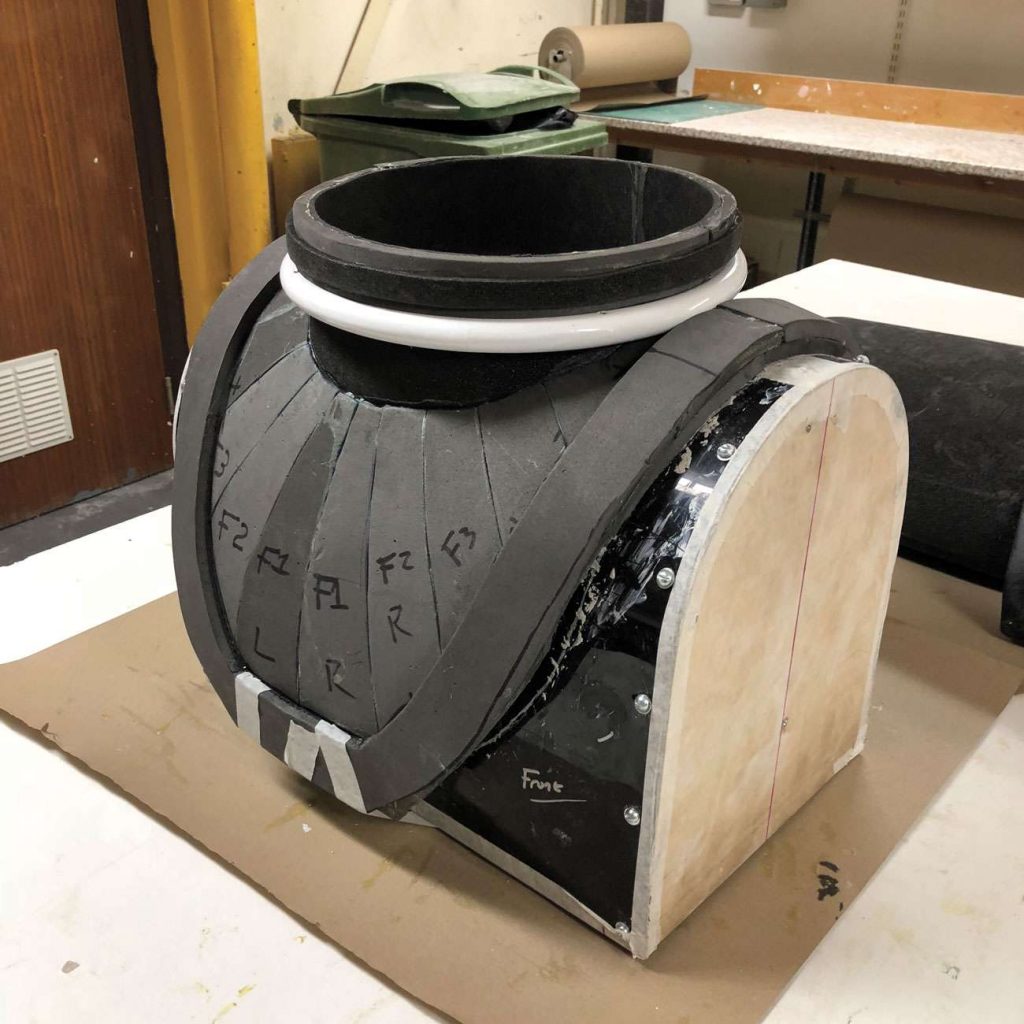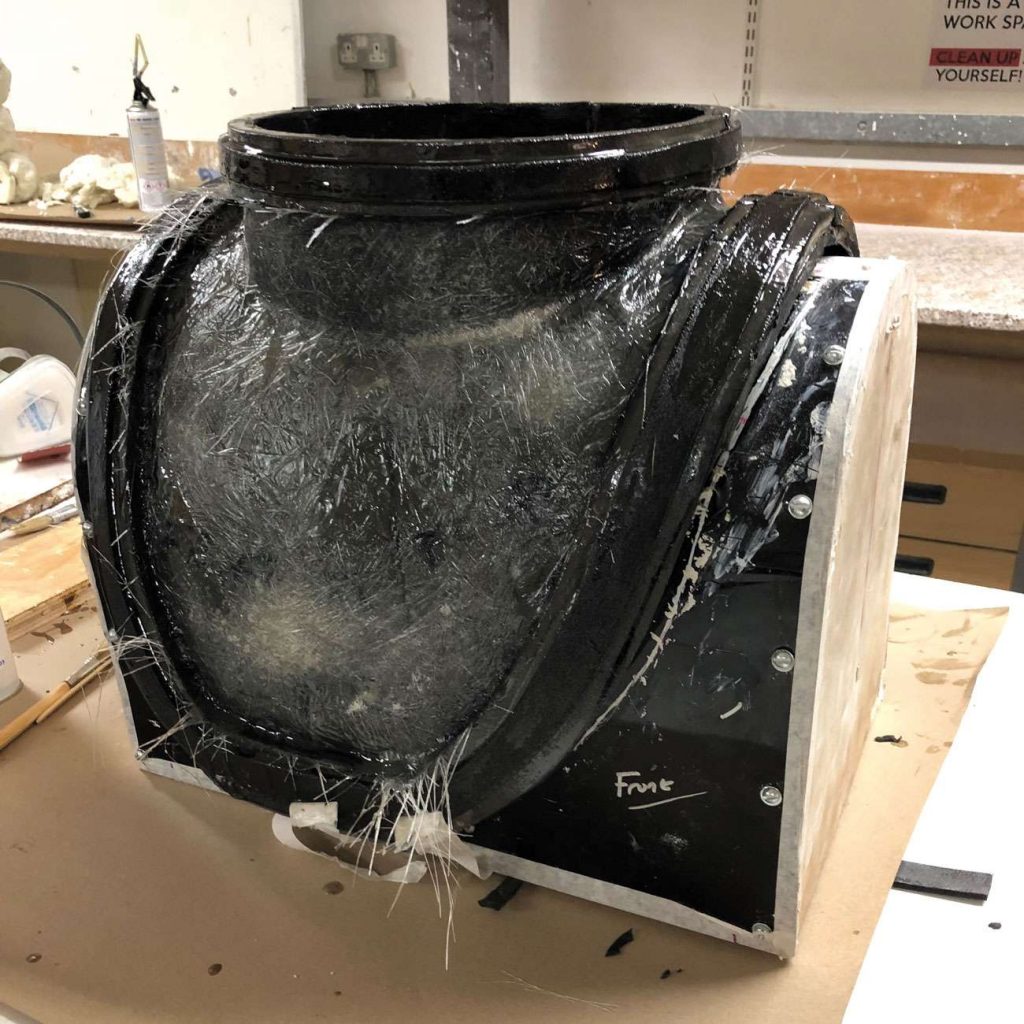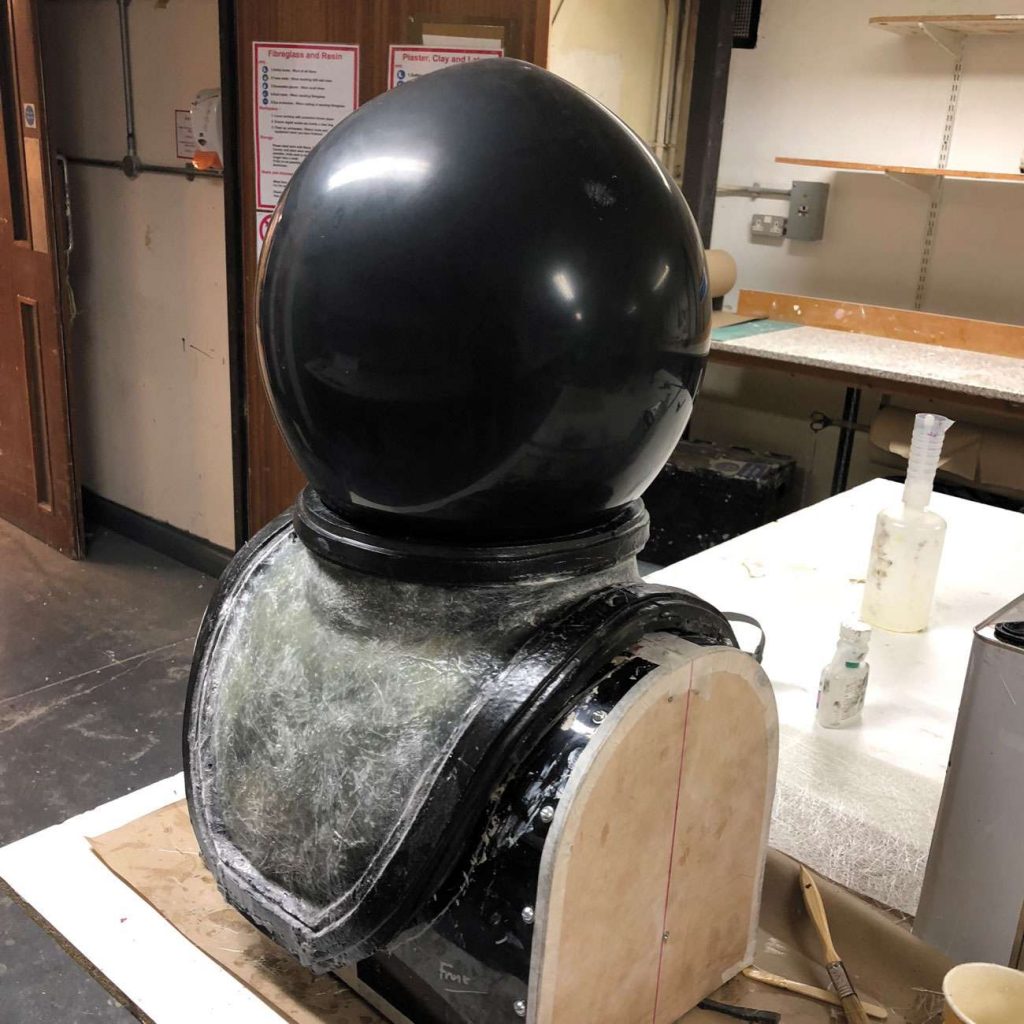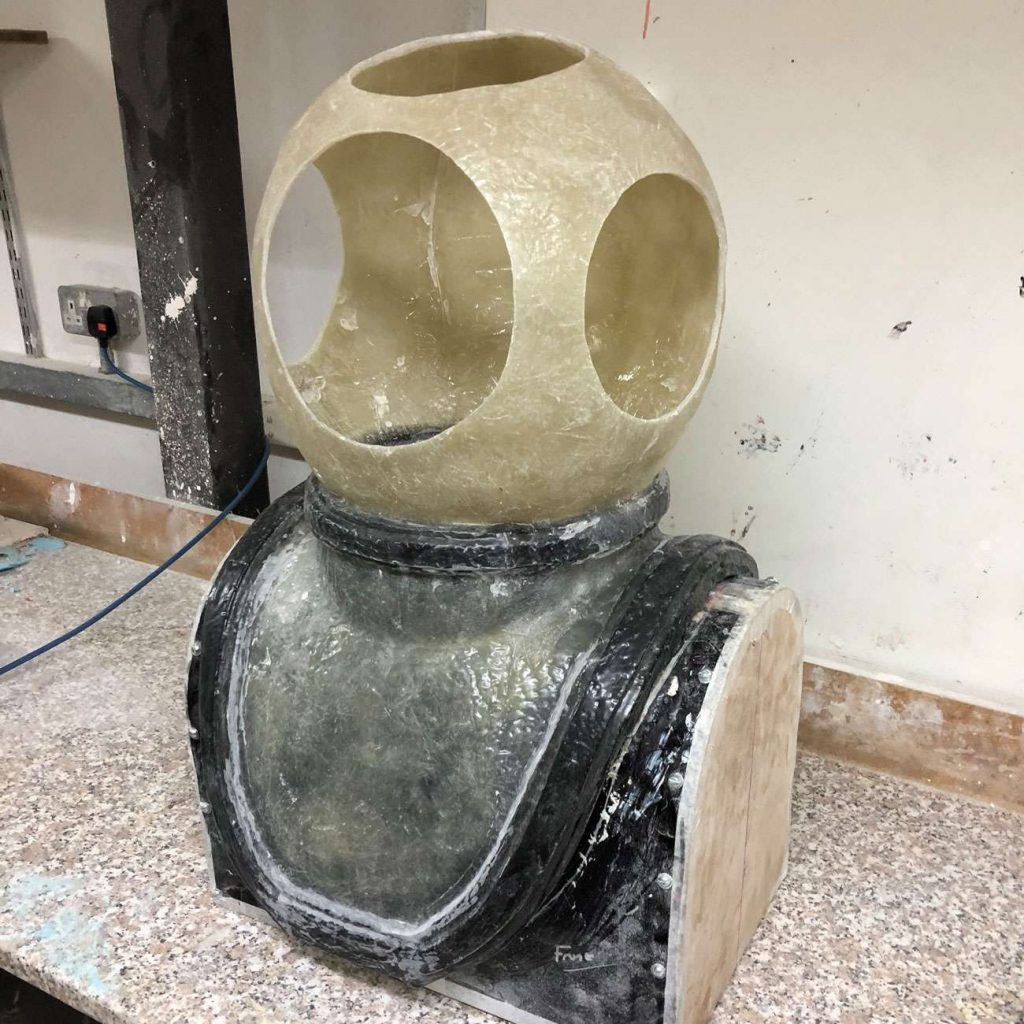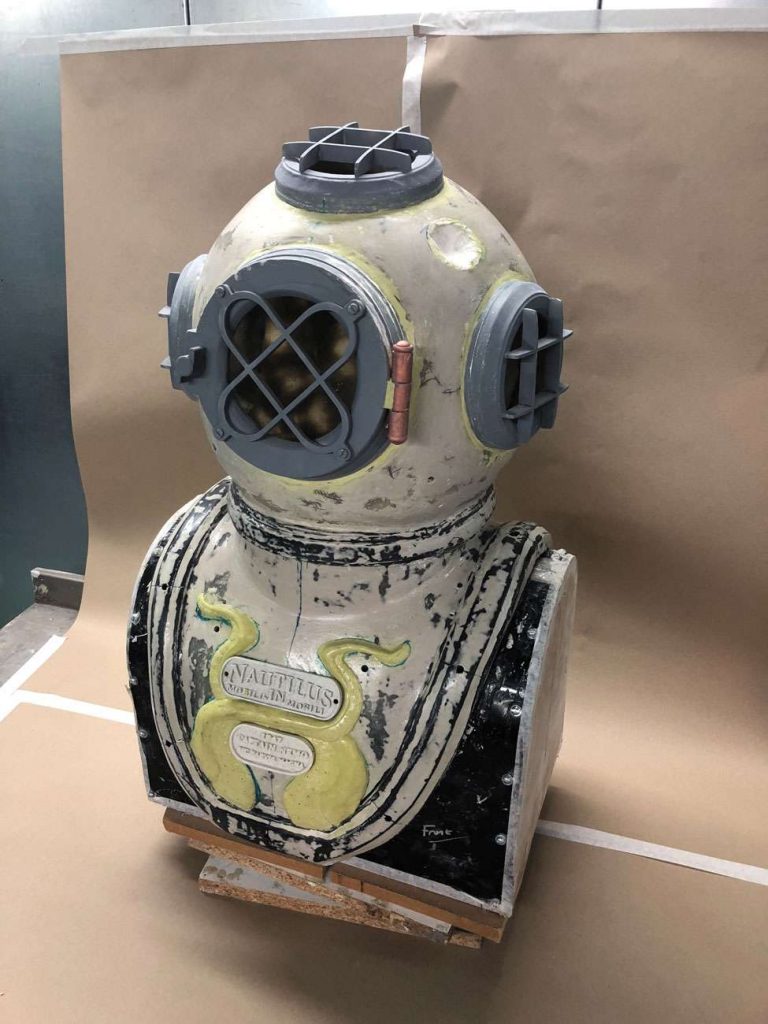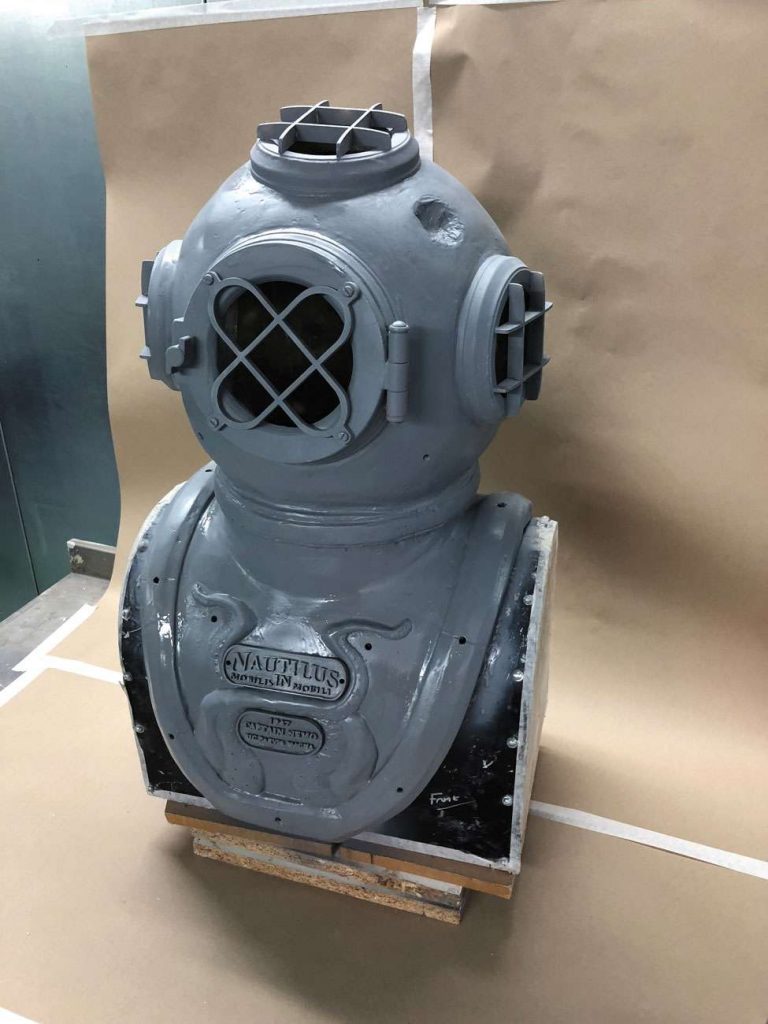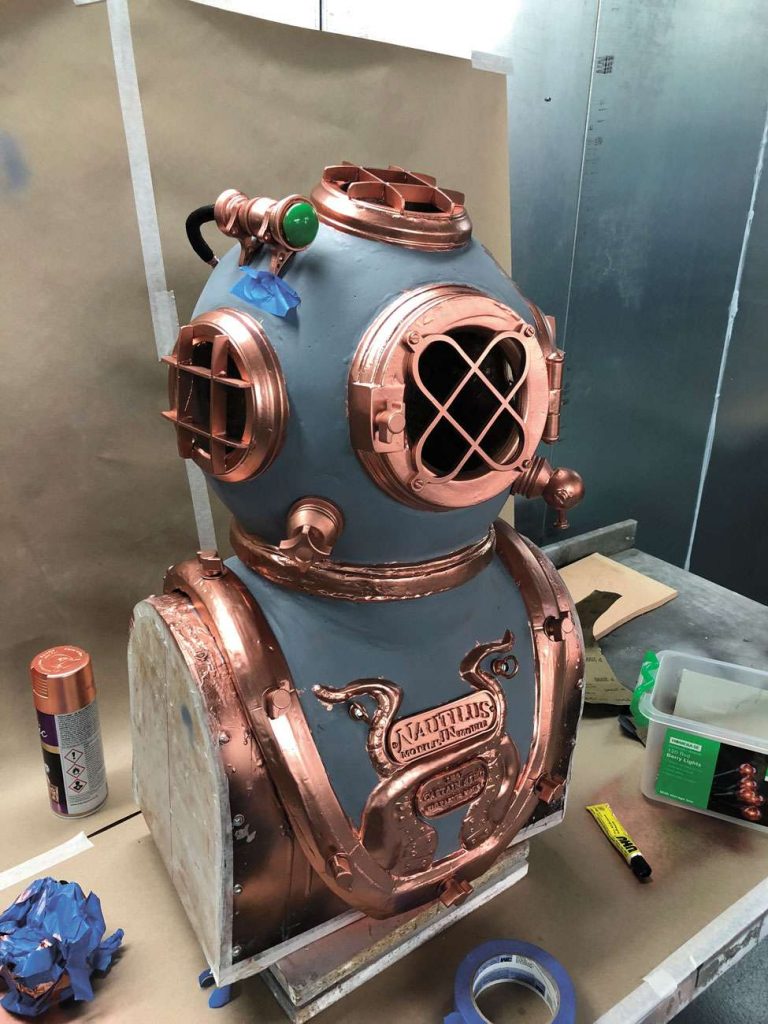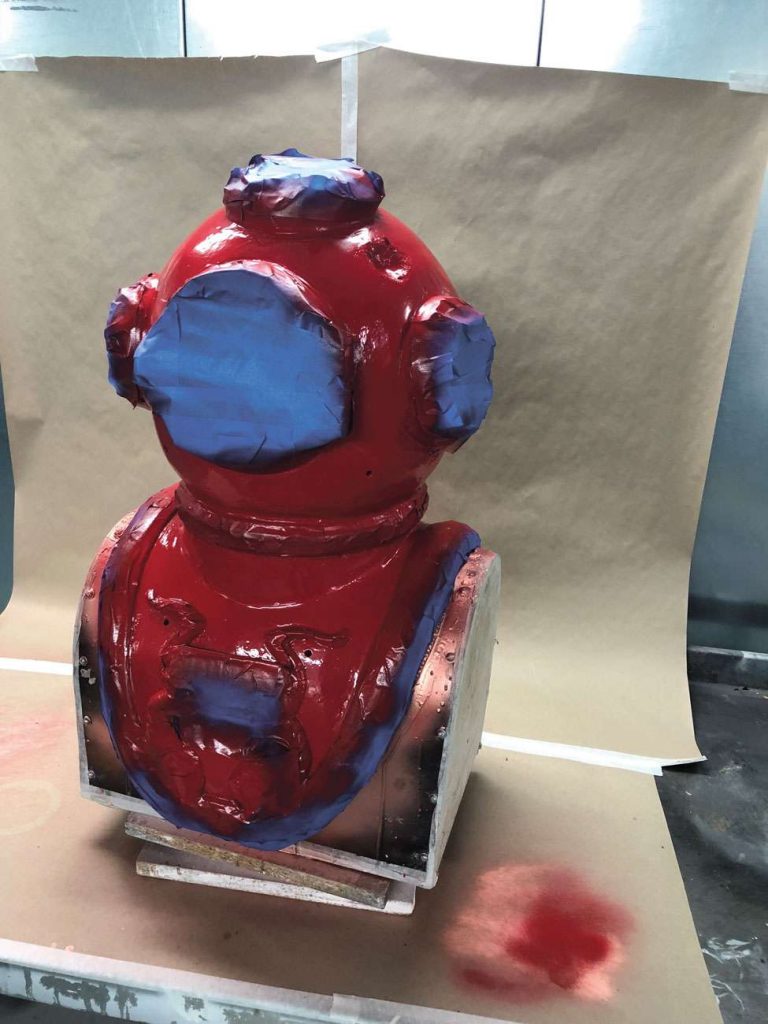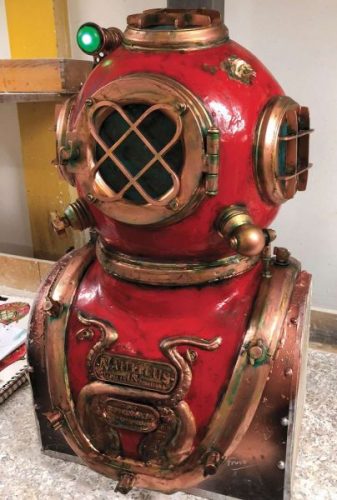
A life size replica Deep Sea diving helmet inspired by Jules Vernes’ ‘20,000 Leagues Under the Sea’
Being a prop maker means that I am constantly having to adapt to working in new materials and problem solve on the job, a recent project of mine was no different. Last year whilst studying in my second year at university I tasked myself with designing and building a deep sea diving helmet prop as my final major project. This was to be inspired by Jules Verne’s novel ‘20,000 Leagues Under the Sea’.
Having designed and planned the project I began with sculpting the form for the chest/ collar piece of the helmet around a shaped form which I previously prepared. Taking patterns from this meant that it would be possible to to ensure that the shape would be true to the desired shape in another material. This material was plastazote foam; when cutting foam it is important to ensure that the scalpel blade is sharp so that it can be cut cleanly without any tearing. I stuck these foam pieces together ‘Evo-Stik’ contact adhesive (which is ideal for joining foam).
To get the main round shape of the helmet I inflated a large latex balloon and secured it inside the foam collar. I initially coated this assembly in fiberglass resin to begin adding strength into the piece. One balloon later after a certain explosive mishap; I added three layers of fibreglass matting that once dried, made very solid object that was beginning to look uncannily like a diving helmet. Next once the sphere holes had carefully been marked and cut out using a Dremel rotary tool, I began the long process of filling and sanding to smooth out the piece. At this point I also turned pieces of lace-wood on the lathe for the window surrounds which were then moulded and cast in fibreglass with a ‘gel coat’ layer on the surface to capture the details. After digitally designing shapes such as the window grills and details such as plaques etc I used a laser to cut some 3mm acrylic sheets. The grills could then be secured to the window surrounds and fixed into the helmet.
At this point it was necessary to sculpt on the tentacle patterns using a material called ‘Milliput’ which is idea for such pieces as it dries hard with no risk of cracking. These were sculpted around the two plaques I had previously cut on the laser cutter and fixed using two part epoxy resin. Once final details and fixtures had been added the helmet was prepared for painting using gray primer. Using a primer is a very good idea for most painting jobs as it means that different materials will take the paint in a uniform way and with any luck the colour should stay true to advertised. Since I wanted the design of my diving helmet to be unconventional to match my ‘20,000 Leagues Under the Sea’ inspiration, I chose to make it red with copper coloured accents. Both of which were spray painted with several coats in a spray booth after careful application of masking tape.
Finally I added a few final details along with clear acrylic windows and began a process known as ‘weathering’. This involves essentially adding signs of wear and usage that has to be carefully worked out in order to make sense and allow the viewer to interpret believability to a piece. I used a series of washes and airbrushing in a series of tones.
The making of this prop proved a very enjoyable one for me and was achieved over the course of four weeks. In any project I hope to develop my skills and learn more along the way, this project was no exception and remains one of my firm favorites. It’s work such as this that makes me excited about the jobs that I hope will come to me in the future.
For more information contact Christopher here:
07412159179
www.csutton601.wixsite.com/christophersutton

